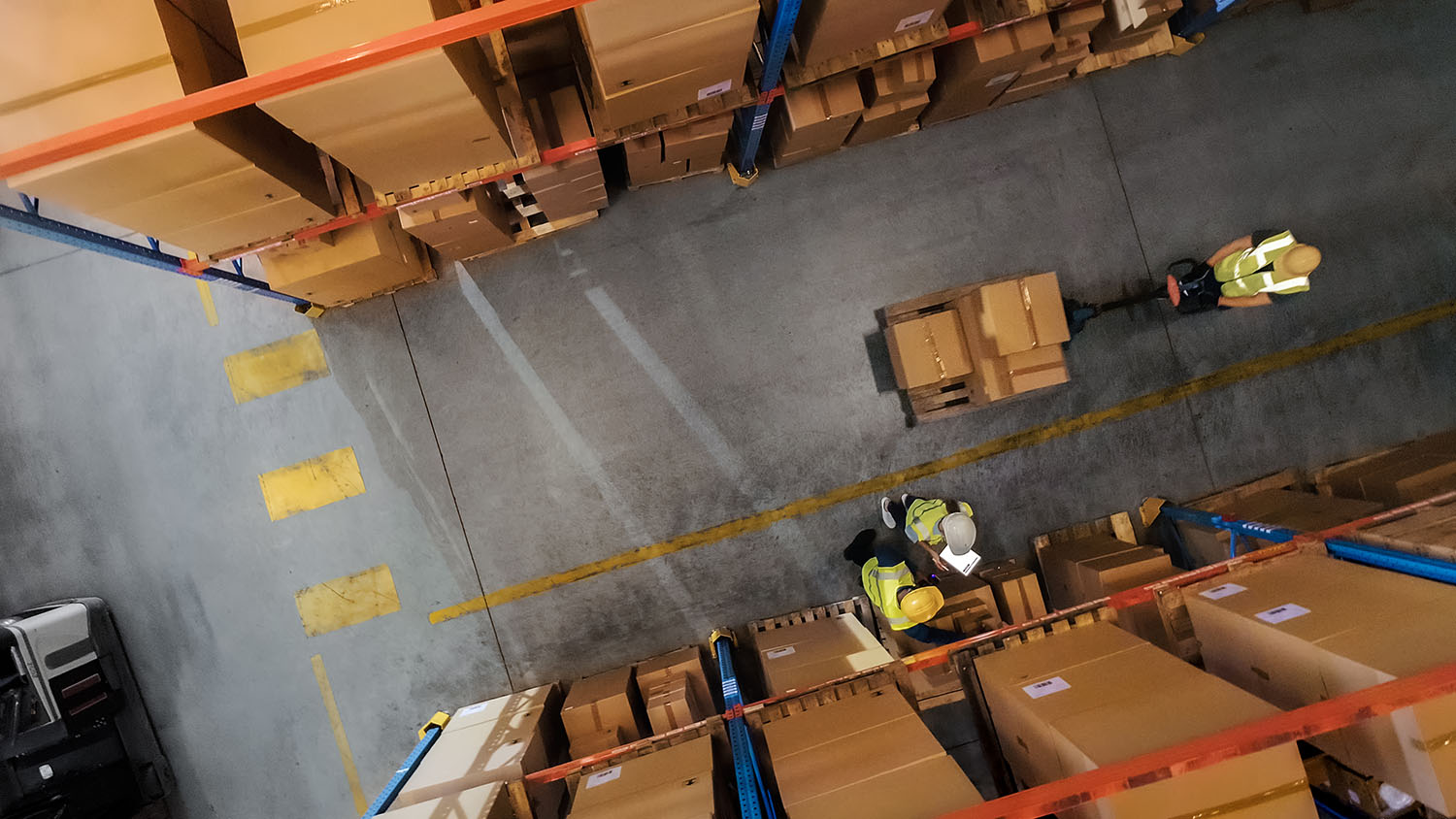As the name implies, order management in retail or product manufacturing involves capturing, tracking, and fulfilling orders as they come in. It encompasses every task that occurs from the moment a customer places an order until it arrives at their doorstep.
Successfully managing this process is important for order fulfillment and the success of any business with warehouses. Especially 3PLs for whom handling thousands of orders for multiple clients can get chaotic very quickly.
In this post, we will explain an order management system, how it works, and how to choose the right one for your business.
What Is an Order Management System?
An Order Management System (OMS) is a software tool that helps businesses track, process, and fulfill customer orders efficiently. It streamlines the entire order lifecycle, from when a customer places an order to when it is delivered, ensuring a smooth experience for both businesses and customers. An OMS allows businesses to automate all the processes involved in receiving an order, packaging it, and shipping it to the customer, all from one platform. Many industries benefit from using OMS software, from retail to electronics, from automotive and pharmaceutical.
How an OMS works
Imagine you run an online store selling sneakers. A customer places an order through your website and selects home delivery. Your OMS immediately kicks into action by:
- Checking inventory: The system verifies if the sneakers are in stock and which warehouse they are located in.
- Processing the order: It sends the order details to the warehouse closest to the customer for faster and cheaper shipping.
- Coordinating fulfillment: The warehouse team picks, packs, and ships the sneakers. The OMS updates tracking information and notifies the customer.
- Managing returns: If the customer wants to exchange the sneakers for a different size, the OMS facilitates the return and replacement process.
An OMS helps consolidate all your orders from different platforms (website, store, or app) into one channel for easy tracking. It can also help monitor stock levels, order trends, and fulfillment records, all of which are important data to track for overall warehouse efficiency.
Order Management System vs. Warehouse Management System: What’s the Difference?
Warehouse management systems (WMS) and order management systems (OMS) are both crucial parts of a supply chain’s operations. However, each tool focuses on different aspects of the supply chain. A WMS focuses on activities within a warehouse. OMS is focused on handling an order’s full lifecycle from order placement all the way to delivery,
A WMS focuses on improving warehouse operations and carries out functions in the warehouse facility, such as order fulfillment (picking, packing, and shipping), improving warehouse layout, and space management. It also offers real-time visibility into inventory levels to maximize space and improve order replenishment cycles.
Here are some of the primary functions of a WMS
- Inventory storage & tracking: Ensures accurate stock levels and prevents overstocking or shortages.
- Order fulfillment: Manages picking, packing, and shipping to ensure efficient processing.
- Warehouse organization: Improves space management and warehouse layout for better workflow.
- Real-time inventory visibility: Helps businesses quickly locate and replenish stock.
A good example of a WMS is Da Vinci Unified. This tool offers logistics professionals and supply chain managers a wide range of features, such as smart shipping, barcode scanning, and real-time inventory monitoring, for order fulfillment with a warehouse. It is configurable depending on the needs of e-commerce companies, wholesale distributors, and 3PL providers.
On the other hand, an OMS is built to track all of a retail or manufacturing company’s orders throughout their lifecycle, operating on a larger scale than a WMS and often covering multiple warehouses at once at different locations.
For example, an online fashion retailer uses an OMS to process orders from multiple warehouses. When a customer purchases a dress, the system checks stock availability, selects the nearest warehouse for shipping, and updates the customer on delivery progress.
Benefits of Using an Order Management System
An order management system brings structure to the chaos that is managing multiple orders from different channels. Here are the benefits of purchasing and using an OMS:
Pattern Identification
With an effective order management system, your business can leverage the data insights it generates for strategic decision-making. Order data can reveal customer preferences, trends, and patterns and even help you identify new markets and refine your product offerings. These insights are relevant to e-commerce managers who want to make informed decisions and get ahead of the competition.
Supply Chain Optimization
When order management systems are integrated into supply chain processes like inventory management, procurement, and logistics, your business can achieve higher levels of coordination and visibility. This can improve forecasting accuracy and the speed from order to delivery.
Improved Inventory Management
By integrating OMS with inventory management systems, you can get real-time visibility into inventory locations, levels, and logistics across your business. This visibility helps businesses maintain stock levels and reduce the risk of over- and understocking. Accurate inventory data helps you make informed decisions concerning procurement, fulfillment, and replenishment.
Streamlined Order Processing
By automating order entry, tracking, and routing with a company-wide OMS, you can eliminate manual processes that are prone to human error. This system ensures that orders are accurately taken and routed to the right fulfillment centers, reducing delays and expanding the volumes you handle with precision.
What Does an Order Management System Do?
An OMS helps supply chain managers, logistics professionals, and warehouse managers deal with high-volume order fulfillment. It is designed to integrate with other aspects of your business, like CRM and ERP, to create a digital ecosystem of insight into every process. Other things you can achieve with an OMS include:
Order Tracking
An OMS helps you and your customers to track orders and shipments from processing to delivery. Real-time updates can be shared with customers to build trust and cut customer inquiries about shipment status.
Inventory Management
With historical order data, you can pull up reports and carry out more accurate demand forecasts, make more informed decisions on how many products to reorder, and determine product demand by location so you know which warehouses to store inventory in. An OMS can help you optimize your inventory and keep you from overstocking or understocking while meeting demand.
Returns management
Return requests are inevitable, and an OMS helps you track returns and determine the reason behind them, providing qualitative feedback to help you improve customer satisfaction while cutting costs.
How to Choose the Right Order Management System for Your Business
The OMS market has options ranging from comprehensive enterprise solutions (Oracle, SAP, and Manhattan Associates among the best-known) to tailored systems for specific industries and smaller businesses. With so many different OMS options available, you should choose the tool that fully meets your needs. Here are some tips to help you decide.
Assess Your Business Needs
Consider the size of the business and its growth potential. Considering your current order volume and projected growth, choose a system that can easily scale to accommodate hoped-for growth spurts, including increased order volume and extra sales channels.
Integration Requirements
When picking an OMS, it should be fully integrated with other software solutions your business relies on, like accounting, CRM, or warehouse management systems. An OMS that fully integrates ensures smooth workflow and data exchange, reduces the risk of errors, and saves you time.
Prioritize Customer Experience
Look for features like real-time order tracking, easy returns processing, and automated notifications that help maintain positive relationships with consumers if you’re a retailer or customers if you’re a 3PL. Other features like loyalty programs, personalized order recommendations, and customer service tools can give your customers a more seamless shopping experience and build their loyalty.
Cloud-based or On-premises?
Decide between a cloud-based (SaaS) or on-premises solution. Cloud-based OMS is hosted online and doesn’t need hardware or maintenance. It offers scalability, automatic updates, and remote access in exchange for ongoing subscription costs.
An on-premises OMS is installed on your company’s servers, giving you full control over security and customization. While it requires higher upfront costs and IT management, it can be more cost-effective in the long term. If you need flexibility and easy setup, a cloud-based OMS is best. If you prioritize security and customization, an on-premises OMS may be the right choice.
Best Practices for Implementing an Order Management System
Here are some of the best practices to follow:
- Centralize Order Information
Store all order data, such as sales, inventory, and customer details, in one system to improve visibility and coordination across different departments. This prevents miscommunication, reduces errors, and ensures everyone has access to the same information in real time.
Ensure Accurate Inventory Management
Integrate your OMS with warehouse and sales channels to maintain real-time stock levels. This prevents overselling, stock shortages, and fulfillment delays.
Optimize Order Fulfillment
Automate key steps such as order processing, shipping, and returns to reduce delays and errors. Use smart fulfillment options, such as routing orders to the nearest warehouse or selecting the fastest and most cost-effective shipping method, to improve efficiency.
Integrate, Integrate, Integrate
Connect your OMS with your e-commerce platforms, accounting software, ERP systems, and third-party logistics providers. This ensures seamless data flow across all operations so everyone has insight into order processing, payments, and shipping at all times.
Setup Effective Communications
Automated order confirmations, shipping updates, and tracking details keep customers updated, improving the overall customer experience.
Monitor Key Performance Indicators
Track order accuracy, fulfillment speed, return rates, and customer satisfaction. Constantly analyzing these KPIs helps identify any issues, optimize workflows, and improve overall performance.
Provide Training and Support
Ensure all necessary employees understand how to use the OMS properly through proper training and continuous support. A well-trained team can make the most of the software, so you get value for money.
Order Management System FAQs
What industries benefit most from an OMS?
Industries like pharmaceutical companies, retail, e-commerce, food service, transportation and automotive industries benefit greatly from an OMS.
What is order management?
Order management is the process of receiving, tracking, and fulfilling customer orders, often across a whole company’s supply chain rather within one warehouse.
Can an OMS integrate with other business software?
Yes, OMS can integrate with other business software like accounting software, CRMs, and e-commerce platforms.
Is an OMS suitable for small businesses?
OMS is suitable for small businesses as it helps them streamline their processes, thereby reducing the need for manual labor, which reduces human errors and costs.
Simplify Your Order Management with OMS/WMS Integration
OMSs work hand-in-hand with traditional warehouse management systems by handling the commercial side of transactions—capturing orders, processing payments, and managing customer information.
By connecting an OMS with a WMS, you create a fuller flow of information: orders enter through your OMS and are immediately translated into optimized picking, packing, and shipping operations by our warehouse management system.
This integration provides real-time visibility across the order lifecycle and enables logistics professionals to accurately predict demand and maintain healthy inventory levels.
With Da Vinci WMS connected to an OMS, you gain warehouse efficiency on top of end-to-end order intelligence.
Request a demo to try out Da Vinci for your business today.



